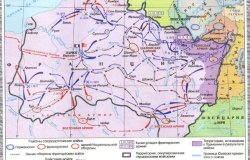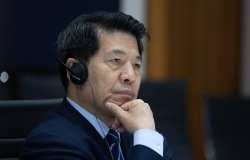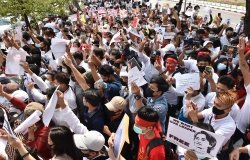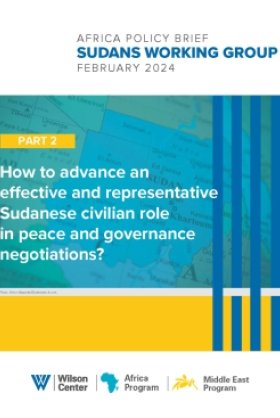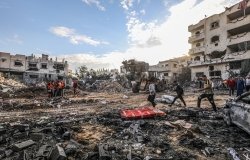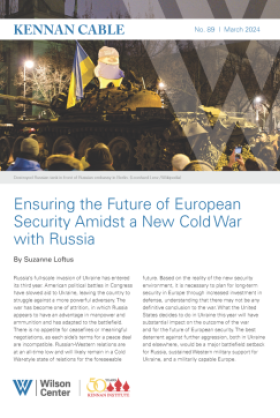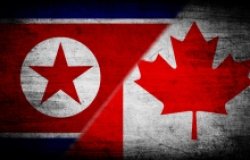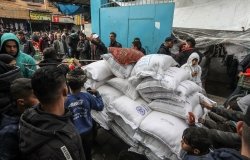What You Won’t Hear in Afghanistan in 2015
"In the coming year, all eyes will be on Afghanistan’s fragile national unity government as it confronts a ferocious insurgency and a floundering economy — and with significantly less international support than it enjoyed in previous years," writes Michael Kugelman.
Dec. 31, 2014 has come and gone. The NATO coalition’s combat role in Afghanistan has formally ended, and most foreign troops have left the country. All that remains is a U.S.-led residual force of about 13,000 that will mainly serve in a training role for Afghan forces.
In the coming year, all eyes will be on Afghanistan’s fragile national unity government as it confronts a ferocious insurgency and a floundering economy — and with significantly less international support than it enjoyed in previous years. How Kabul handles these two big-ticket challenges will dominate headlines about Afghanistan in 2015.
However, some of Afghanistan’s most notable challenges this year — which make for some of its most compelling storylines overall — will likely hog fewer headlines. Four of these challenges are particularly significant, because the extent to which Kabul can address them will have considerable implications for the country’s trajectory and the well-being of its long-suffering people.
1. Kabul Bank scandal
In 2010 Afghanistan’s largest private bank collapsed after losing nearly $1 billion, most of which had been deposited by international donors. In 2013 two top Kabul Bank officials were convicted for stealing more than $800 million of the lost $935 million. They were sentenced to five years in prison, which many observers criticized as too light of a sentence. Some key individuals implicated in the scandal, including several brothers of then-president Hamid Karzai, were never prosecuted.
In October 2014 newly inaugurated Afghan President Ashraf Ghani announced he was reopening the case as part of a major anti-corruption campaign. Days after the announcement, seven people were arrested. Then, last month, Afghanistan’s Supreme Court ruled in favor of a previous appeals court decision to lengthen the prison terms of several convicted Kabul Bank officials, and to freeze the assets of those suspected of stealing money. Afghanistan’s government welcomed the ruling, and insisted that its work won’t end until all of the embezzled money is recovered (more than $700 million remains unaccounted for).
How far Ghani’s government decides to go in investigating this case — described as one of the world’s largest cases of bank fraud — will serve as a litmus test of Afghanistan’s ability and willingness to wage a successful war on corruption, one of the country’s most formidable challenges. Additionally, given that it was mostly their money that was stolen, foreign financiers will be carefully watching this case as they consider how to structure future investments in Afghanistan.
2. Uzbek militancy
The Afghan Taliban and Haqqani Network are Kabul’s chief nemeses. However, the last few years have seen a sharp rise in the activities of Uzbek jihadists in Afghanistan, and especially those of the Islamist Movement of Uzbekistan (IMU). This is a group, according to the United Nations, that has received start-up funding from al Qaeda and has had its top leaders employed by that organization. The IMU is already a prominent player in neighboring Pakistan, having cooperated operationally with the Pakistani Taliban in several recent mass-casualty attacks, including the assault on Karachi’s airport last June. The IMU is a chief target of the Pakistani army’s current offensive in North Waziristan.
In Afghanistan the IMU — working closely with the Afghan Taliban — has built a significant presence in nine provinces across the country’s north, and is attempting to establish a base around the northern city of Kunduz. Pakistani journalist Ahmed Rashid (who has written extensively on Central Asian militancy) believes that the IMU, in collaboration with Pakistani and Afghan militants, could try to seize Afghanistan’s entire northeastern corridor to establish a base for operations against Kabul.
And yet the IMU isn’t the only Uzbek militant group to be worried about in Afghanistan. In November 2014 the largest Uzbek militant faction fighting in Syria (known as Imam Bukhori Jamaat) declared its allegiance to Mullah Mohammed Omar, the Afghan Taliban’s supreme leader. The Uzbek group’s leader, Sheikh Salahuddin, was reportedly in Afghanistan prior to Syria and claims to have close connections to Afghan Taliban and Haqqani Network leaders.
In essence, Afghanistan faces another potent militant threat far from its volatile south and east. To be sure, Afghan forces are addressing the Uzbek problem in their country (last month, police said they killed three IMU-linked commanders in the northern province of Baghlan). The extent to which they can do so, however, remains to be seen.
3. Abandoned U.S. military hardware
Last year, news emerged that the U.S. military would leave behind equipment in Afghanistan valued at $6 billion and weighing a total of 170 million pounds. The plan was to bequeath this equipment to Afghan forces, export it to allied countries, or sell it for scrap. This is not run-of-the-mill equipment like night-vision goggles; rather, it includes 850 Mine-Resistant Ambush Protected vehicles (MRAPS) that have shielded American soldiers from roadside improvised explosive devices.
The fate of this equipment is unclear. On the one hand, U.S. military officials say they flew “hundreds” of MRAPs and other armored vehicles out of Afghanistan last October. On the other hand, one month earlier, in September, Washington decided to sell 160 MRAPs to Pakistan — though none of these vehicles had been in Afghanistan. Additionally, the U.S. government reportedly wants to transfer MRAPs to Ukraine, but in recent days Ghani has expressed strong opposition to this idea and plans to take up the matter with U.S. President Barack Obama when he visits Washington in the coming weeks.
Much of this materiel likely remains in Afghanistan, and in its original form. The idea of large quantities of abandoned military equipment lying around in a country like Afghanistan (or even being transferred to capacity-constrained Afghan forces) is deeply troubling, given that it could easily end up in the wrong hands. Kabul will need to work closely with members of the residual U.S. troop presence to ensure that this hardware is safely transferred to new homes or converted into more innocuous forms. Until then, one cannot rule out the possibility of the Taliban seizing an array of new toys that could dramatically ramp up its tactical capacities.
4. Unexploded devices
A major consequence of decades of war in Afghanistan is the scores of undetonated devices littering the country. According to the United Nations, nearly one million Afghans live within 500 meters of “landmine-contaminated” areas. The good news is that in recent years more than 80 percent of Afghanistan’s minefields have been cleared. Unfortunately, it is other unexploded ordnance — mainly grenades and mortar shells — that are more concerning, especially because U.S. troops have failed to remove many of these items from now-abandoned firing ranges (most of which contain “thousands” of unexploded devices) and from battle zones in civilian areas. Additionally, grenades and mortar shells are arguably more deadly than mines, which often maim rather than kill.
Now-departed international forces have saddled remaining foreign troops and Afghan authorities with the complicated and expensive task of locating and removing deadly and hard-to-find devices (fortunately, a Congressional spending bill filed last month allots $250 million for the disposal of unexploded ordnance on U.S. bases). It is also a dangerous task; Taliban fighters often target those clearing these devices.
And yet failing to remove them will likely mean more casualties for a population already caught in the crossfire of conflict for far too long.
The opinions expressed here are soley those of the author.
About the Author


Indo-Pacific Program
The Indo-Pacific Program promotes policy debate and intellectual discussions on US interests in the Asia-Pacific as well as political, economic, security, and social issues relating to the world’s most populous and economically dynamic region. Read more
